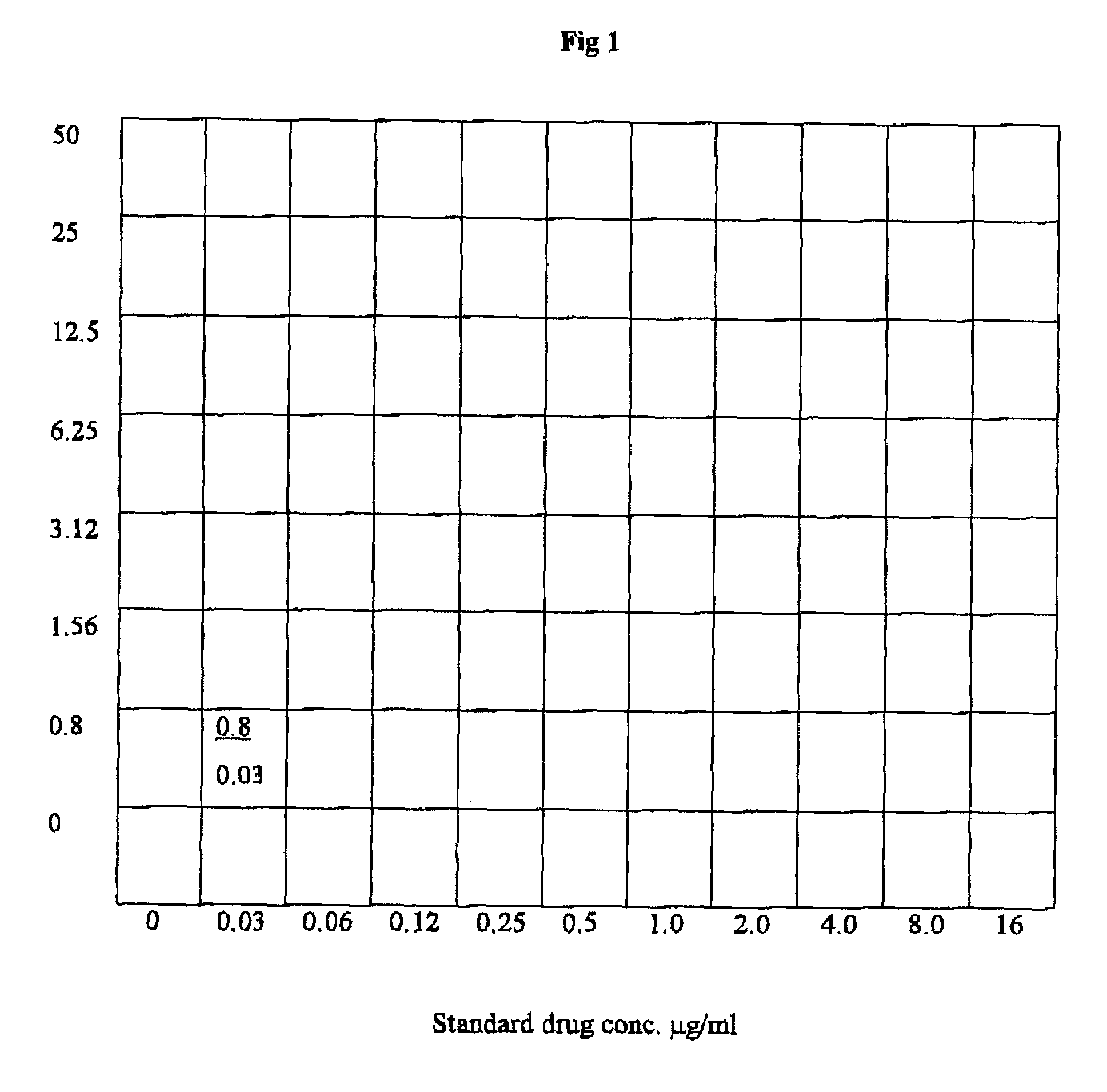Use of herbal agents for potentiation of bioefficacy of anti infectives
a bioefficacy and anti-infective technology, applied in the field of chemotherapeutics, can solve the problems of unsatisfactory patient compliance, undesirable side effects and toxic effects, and high treatment cost of such agents
- Summary
- Abstract
- Description
- Claims
- Application Information
AI Technical Summary
Benefits of technology
Problems solved by technology
Method used
Image
Examples
example 1
Preparation of Colourless, Non-pungent 99% Pure Piperine
[0058]This was done by the process claimed in Indian Patents 1726891 and IP 172690 and U.S. Pat. No. 5,439,891 and U.S. application Ser. No, 60 / 306917 / 2001, which is incorporated herein by reference.
example 2
Decrease in the MICs of Rifampicin Against M.tuberculosis, M. avium and M. intracellure When Used in Combination with Piperine and Fraction of Cuminum cyminum
[0059]Minimum Inhibitory Concentration (MIC) of rifampicin alone and in combination with piperine was performed against Mycobacterial species, using method described in the study design.
[0060]Two-fold reduction in MIC of rifampicin was observed in combination with piperine and fraction of Cuminum cyminum (Table 4-a, 4-b)
example 3
Reduction in the Dose Requirement of Rifampicin When Used in Combination with Piperine and Fraction of Cuminum cyminum in Systemic Infection Model of Mice
[0061]The study was conducted to see the in vivo response of rifampicin in combination with piperine. The Swiss albino mice were infected intravenously with M.tuberculosis H37Rv (106 CFU / mouse). The infected mice were divided in groups and each group consisted of 6 mice.
[0062]The treatment started 24 hrs post infection and continued for 4 weeks in once a day for 5 days in a week dosing schedule. The mice were sacrificed after 4 weeks and the CFU was enumerated from the lungs and the spleen. Rifampicin alone at 20 mg / kg was able to bring about 2-log deduction in log 10 CFU. Same effect was observed with rifampicin at 10 mg / kg when given in combination with pipette at 20 mg / kg. Whereas fraction of Cuminum cyminum was more effective as it yielded the same reduction in log 10 CFU at 5 mg / kg dose of rifampicin. (FIGS. 4-a, 4-b)
[0063]
TAB...
PUM
| Property | Measurement | Unit |
|---|---|---|
| concentration | aaaaa | aaaaa |
| concentration | aaaaa | aaaaa |
| HPLC | aaaaa | aaaaa |
Abstract
Description
Claims
Application Information
 Login to View More
Login to View More - R&D
- Intellectual Property
- Life Sciences
- Materials
- Tech Scout
- Unparalleled Data Quality
- Higher Quality Content
- 60% Fewer Hallucinations
Browse by: Latest US Patents, China's latest patents, Technical Efficacy Thesaurus, Application Domain, Technology Topic, Popular Technical Reports.
© 2025 PatSnap. All rights reserved.Legal|Privacy policy|Modern Slavery Act Transparency Statement|Sitemap|About US| Contact US: help@patsnap.com



